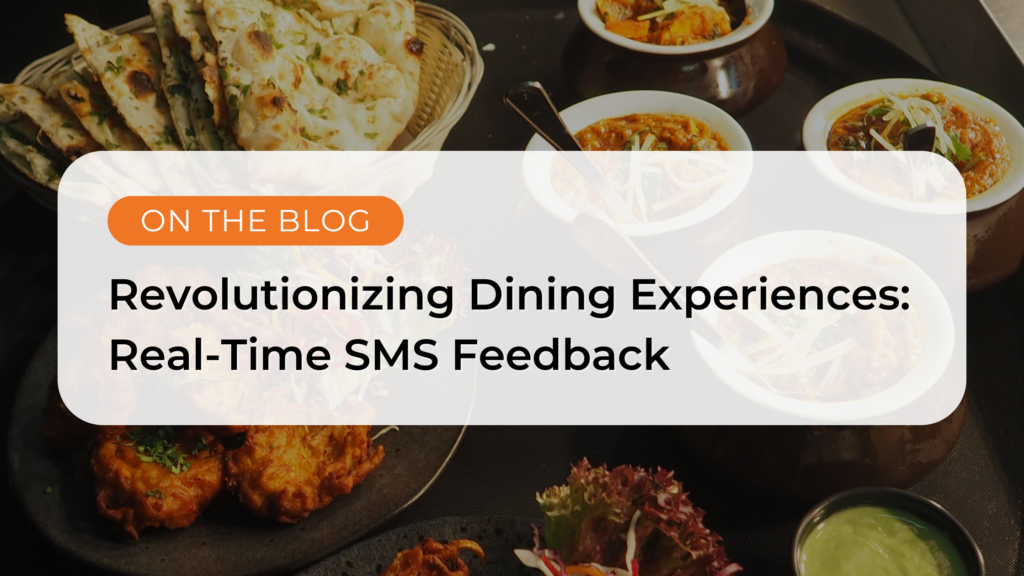Sustainability has quickly become a 2020 buzzword, and for good reason. According to the World Economic Forum, sustainable dining practices have “become a business imperative for all companies.” The hospitality industry plays an integral role in meeting people’s current needs without compromising future generations’ ability to do the same.
The dining world, in particular, has the opportunity to join the conversation around sustainable practices that protect, preserve and restore the environment. Throughout this article, we will break down current dining trends that businesses can implement into their strategic planning to promote social equity, enhance community well-being and meet stakeholders’ economic needs. This is a daunting balance to reach, but let’s break it down.
Changing Consumer Demand
According to Forbes, Gen Z, or consumers 22 and under, is set to be the largest global consumer group by 2020, making up 32% of the world population. With this segment holding so much power, it is essential for businesses to understand the psychographics driving their consumer behavior. For example, 73% of Generation Z is willing to pay more for sustainable products. These consumers are looking beyond the meal to the story and lasting impact of their purchasing decisions. This means it is more important than ever for food to be ethically and transparently sourced. Sustainable shifts gain attention and respect from this growing consumer group and develop a loyal base of brand advocates.
Sustainability & Business
Sustainable business practices also impact internal efficiencies. For instance, institutions that value sustainability have a greater likelihood to recruit top talent, boost employee engagement and reduce turnover. In fact, the National Environmental Education Foundation’s survey report, Winning in the Marketplace and the Workplace, found sustainable practices improve employee alignment, pride and advocacy. In short, employees who are proud of their company are more likely to be productive and stay longer.
Lastly, sustainable dining practices benefit the bottom line by reducing long term operating expenses. In other words, by minimizing your business’ environmental footprint, you are taking strides to reduce waste and save money.
2020 Trends
1. Cook Seasonally
Seasonal menus change year-round depending on ingredients’ natural growing seasons. Restaurants are then able to serve produce and protein at its peak quality and freshness. Customers appreciate this approach because of restaurants’ creative menu options that tell a story with their food.
2. Producer Partnerships
Choosing sustainable partners within a supply chain directly reflects the quality of the business. Going local is a great step to support your community while also reducing carbon emissions through a shortened supply chain.
Once you select a preferred producer, you can either stick to that one supplier or rotate your support across various local businesses. Creating relationships with local, sustainable producers also positions you to communicate values you would like translated into the products you source. For example, work with your supplier to utilize ugly produce, or fruits and vegetables that are not supplied because they do not meet aesthetic standards. These products can be used to improve a dish’s flavor profile rather than being wasted due to their aesthetic appearance.
Finally, no matter which supplier you choose, a great option to consider is to buy bulk during peak seasons. This ensures you receive quality food while also cutting down on cost. Drying, freezing and preserving food are a few options to make that bulk quantity last.
3. Grow Your Food
If finding ethical partners is a hurdle, you also have the option to start a kitchen garden. This internal effort provides chefs with firsthand education and experience on the literal roots of their ingredients and instills a culture of appreciation for the food you work with. A kitchen garden can then be supplemented with a self-maintained compost bin that reduces food waste by using scraps to fertilize the ingredients you produce.
4. Think Beyond the Food
Eco-friendly restaurant equipment and designs are additional outlets to consider when implementing sustainable practices. Investing in energy-efficient equipment can be a difficult initial expense to justify. However, the long-term return on investment makes the purchase worthwhile. For instance, buying cheap items racks up costs due to frequent replacement and replenishment needs. On the other hand, paying more for quality equipment, such as energy-efficient coffee machines, motion sensor lights and eco-friendly refrigerators, promises a longer life that pays back.
Avoiding single-use materials is an additional approach to reduce waste. With more plastic-adverse consumers frequenting restaurants and a growing number of proposed legislation banning single-use plastics, beginning the transition to reusable materials will make all the difference. For example, biodegradable or recycled materials and reusable napkins for silverware and plates are simple changes that have a lasting return on investment through more pleased consumers and reduced repurchasing needs.
5. Manage Water Waste
One of the simplest, yet greatest culprits of water waste in professional kitchens include leaking pipes or faucets. Simple solutions to combat water waste include shifting employee behavior to turn off the water when they aren’t using it to conserve energy or investing in water-saving plumbing. An additional approach includes avoiding selling bottled water. This cuts down on plastic consumption and transportation costs and puts restaurants in control of the amount of water they distribute to consumers. Some restaurants have even taken the extra step to consolidate leftover water from customers to clean the floors at the end of the day.
6. Reduce Food Waste
Food waste is one the most fast-growing, costly problems in the nation with $218 billion being spent annually to grow, process, transport and dispose of food that will never be eaten. This global issue has a massive environmental and human cost.
One effort restaurants can take to change this conversation is limiting the number of menu items to reduce waste. Another approach includes enlisting a team to monitor your restaurant’s food waste habits to keep the team accountable.
Donations are another simple solution to address food surplus. Apps such as MealConnect make it simple to partner with local Feeding America food banks and the Good Samaritan Food Donation Act protects restaurants from criminal and civil liability when distributing food to organizations in need.
7. Start Small
Implementing sustainable dining habits can be an intimidating challenge to take on; however, it doesn’t all have to be done overnight. Taking small steps towards a larger goal makes this shift far more approachable and achievable. Start breaking down goals into where you want to be in the future and research creative solutions for sustainable habits. Research is a continued to endeavor to stay on top of industry changes that influence ethically sourcing food and materials.
Small steps to start include collecting information on products and seeking sustainable opportunities that also reduce costs. For example, you can print menus on recycled paper, use linen napkins instead of disposable ones, return packaging to suppliers for reuse or recycle glass and cardboard.
8. Educate Staff About Sustainable Dining
Getting one’s team to believe in the organization’s mission is a critical component to ensure sustainable dining shifts last. Efforts such as taking staff to local farms to learn about the products they work with and conducting training on ingredients empower employees to communicate that value back to consumers. For example, a customer may question why a certain item is not served on the menu. An educated staff can inform the dining consumer on how the business’ ethical standards influence product offerings.
9. Plant-Based Foods
The National Restaurant Association predicts the demand for plant-based protein will only continue to grow as 2030 approaches. This finding is also supported by 2020 Gallup research, which found almost a quarter of Americans have eaten less meat in the past year. This change is traced to concerns related to health (70%), the environment (49%), food safety (43%) and animal welfare (41%).
Restaurants must respond to this shift by offering vegetarian and vegan options that promise a more sustainable, accessible dining experience.
A less extreme shift for an alternative form of protein includes sustainably caught seafood. Seafood Watch can be used to make educated decisions on seafood items to add to your menu based on which species are not being overfished.
10. Spread the Word About Sustainable Dining
Once your goals and values as a sustainable institution are set, make it known to the community. Keep clients and partners in the loop of this shift through conscious marketing and explain their role in this change. Most importantly, ensure and communicate all efforts drive back to your north star of benefiting community life.
Burkhart stays on top of latest consumer trends and habits. Collaborate with us to meet the growing demands of your industry while also meeting the bottom line.






